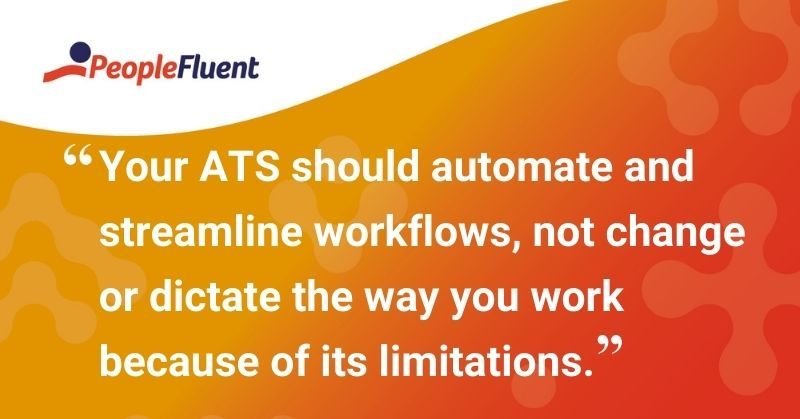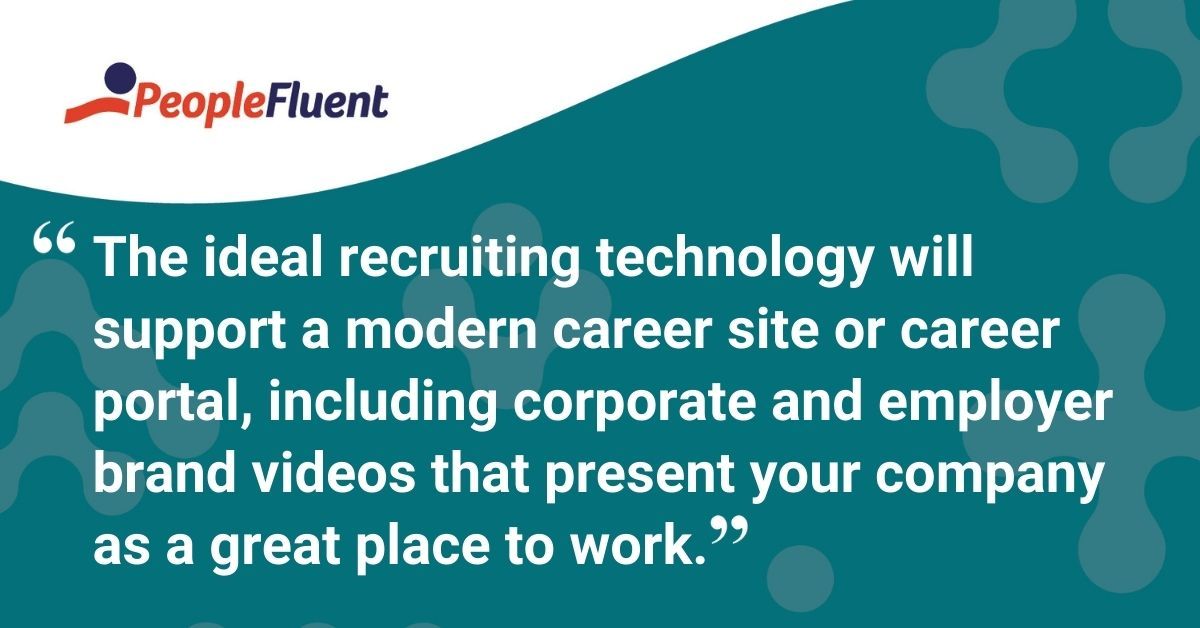Published: Mar 29, 2021Time to read: 6mins Category: Insights
Choosing Your Next Enterprise ATS: 4 Must-Have Features
Your recruiting software should work your way by streamlining and enhancing your unique hiring process without forcing you to adapt to its limitations. Your applicant tracking system (ATS) can make a significant difference for your talent acquisition team through ease of use, efficient processes, and an applicant experience designed with the candidate in mind.
Choosing an enterprise recruiting solution is a high-stakes assignment. Especially for enterprise organizations that need talent acquisition technology that offers sophisticated capabilities at scale. Your recruiting software should work your way—streamlining and enhancing your unique hiring process without forcing you to adapt to its limitations. And at the same time, it should come with features that help your recruiters work efficiently and win top talent.
Here are four features of a modern applicant tracking system (ATS) that can make a significant difference for your talent acquisition team through ease of use, efficient processes, and an applicant experience designed with the candidate in mind.
YOU MIGHT ALSO LIKE | 'How COVID-19 Has and Will Change Recruiting Strategies'
1. Workflow Configurability and Role-Based Personalization
In general, hiring follows a similar process at most organizations. But nearly all organizations have one or more unique steps or requirements in their workflow.
Your ATS should automate and streamline that workflow, not change or dictate the way you work because of its limitations. So look for a recruiting technology that allows you to configure it at the data and process level, ideally without extensive service engagements with the vendor or significant burden on your in-house IT resources.
Recruiting Workflow Elements That Require Configurability
- Application forms
- Routing and notification
- Approvals
- Saved searches
- External as well as internal talent pipelines
A readily configurable ATS allows your recruiting team to adapt and change at the speed of business, whether in response to corporate directives or market conditions.
Along the same lines, a mature and robust ATS offers users an interface tailored or personalized based on their role. Recruiters, hiring managers, and talent acquisition leaders need very different things from their talent acquisition technology.
By selecting a recruiting tool with dashboards that can be configured to the needs of different types of users, you can facilitate user adoption, lower cost-to-hire, and accelerate productivity—all critical success metrics for your technology selection project.

RECOMMENDED READING TO DOWNLOAD TODAY | '5 Recruiting Metrics That Drive Business Value'
2. Talent Pipelines for Efficient Recruiting
For large organizations, maximizing the value of technology means efficiency at scale.
For recruiters, the most efficient—and effective—way to boost efficiency is by mining your recruiting database. Your ATS should enable recruiters to build talent pipelines made up of candidates who have already shown interest in your organization and whom you may have engaged during a prior search.
It should also enable you to source internally, searching existing employees and contingent workers who know the organization and may be interested in transitioning into a new role.
A modern ATS goes beyond merely identifying internal and external candidates and offers ways to keep those candidates engaged so you can reduce time-to-hire and proactively source ahead of need.
POPULAR RELATED READING | '5 Candidate Sourcing Strategies to Build Your Talent Pipeline'
Key Features for Building and Nurturing Talent Pipelines
- Candidate tagging
- Candidate sorting and filtering
- Recruiter collaboration
- Saved searches
- Automated searches
- Alerts and notifications based on candidate criteria
- Internal talent review
- Mass emailing to candidate pools.
3. Career Portal With a Winning Candidate Experience
For candidates, your career site or career portal is the cornerstone of your employer brand. It functions like a 24/7 recruiting operation—helping job seekers find open positions that fit their qualifications, creating their first impressions of your company, conveying your employer value proposition, and otherwise welcoming candidates through a virtual door.
Talent acquisition success hinges on your ability to make it easy—and even fun—to apply. To do that, your ATS creates a candidate experience that inspires them to apply, answer recruiter calls, and make time for interviews, and ultimately start them on the path toward becoming a valued employee.
The ideal recruiting technology will support a modern career site or career portal, including:
- Fully responsive design so candidates get the same stellar experience on any device
- “Quick apply” feature integrated with LinkedIn
- Social collaboration tools that enable candidates to connect with your company and share jobs with their network
- Tools to support employee referrals
- Video job descriptions or day-in-the-life presentations so candidates can see themselves at your organization
- Corporate and employer brand videos that present your company as a great place to work
- Video interviewing and questionnaires candidates can answer via their own uploaded video response
- User-friendly candidate surveys, questionnaires, assessments, and screening tools
- Candidate profiles and tools to enable candidates to check the status of their application and create job searches and alerts
- Mass emailing to candidate pools

HANDPICKED FOR YOU | 'How To Implement an ATS: 13 Things You Need To Accelerate ROI'
4. Onboarding Tools for a Seamless Transition To New Hire
A new hire’s first weeks on the job set the tone for his or her experience as an employee. A smooth onboarding process goes a long way toward reducing turnover. And lower turnover means reduced burden on your recruiting team.
No surprise, then, that a modern ATS includes features that support candidate onboarding, seamlessly transitioning them from candidate to new hire and integrating data into the organization’s HRIS of choice.
Key Features of a Modern ATS That Support Effective Onboarding
- Reference checks
- Offer letters and email communication with successful candidates
- Management of onboarding forms
- Welcome videos for new hires
- Employee interest groups
- Social connection and collaboration
- Workflows for assigning onboarding tasks to managers, IT, new hires, and others, with automated notifications and reminders
- Back-end data integration
MORE FROM THE BLOG | '4 Best Practices for Your Onboarding Checklist'
The Right ATS Is a Competitive Advantage
Hiring processes vary by industry and company, and by the preference and style of your talent acquisition team. The applicant tracking system that best fits your team’s needs is the one that can adapt to your unique hiring process and workflows.
Still, if your enterprise ATS lacks these advanced features, your talent acquisition team may be struggling to attract, hire, and onboard new employees. If so, it’s time to explore recruiting solutions that empower your recruiters and hiring managers to work smarter, win on candidate experience, and accelerate the productivity of new hires.
This is the key to building a skilled, innovative, and diverse workforce — bringing your company’s talent and business strategies to life.
WANT TO KEEP READING? DOWNLOAD THIS | '6 Simple Ways to Calculate the ROI on Your ATS'
Discover How Recruitment Lets You Find the Right People—Fast
PeopleFluent helps you fill critical roles with the right people and the right skillsets on a global scale. At the same time, it helps you build your employer brand and sharpen your competitive edge.